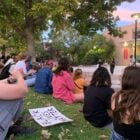Children
Gov. nixes civil rights division, but attorney general indicates he’ll still act
|
New Mexico Gov. Michelle Lujan Grisham killed a bill Friday that would have strengthened Attorney General Raúl Torrez’s authority to protect children’s rights and address racial disparities in how schools discipline children. The AG’s office defends state agencies accused of wrongdoing, but Torrez had wanted a new Civil Rights Division to investigate abuses by state agencies, school districts and other public bodies. Attorneys general in other states pursue civil rights cases, he noted. Both chambers of the Legislature listened, passing the bill in the final week of the legislative session. Days before the deadline for acting on legislation, Lujan Grisham expressed mixed feelings about the legislation, saying prosecutors already have tools to investigate neglect and abuse, according to the Albuquerque Journal.


